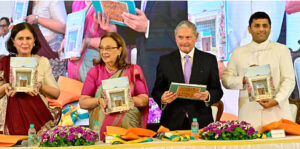 The Framji Dadabhoy Alpaiwalla Museum, Mumbai’s only institution dedicated to Parsi-Zoroastrian history, reopened its doors on 27th March, 2025, following an extensive restoration and modernization effort. The grand reopening, held at the museum’s historic location in Khareghat Colony, was a momentous occasion attended by prominent figures from the Zoroastrian community, marking a new chapter for this unique cultural landmark.
The Framji Dadabhoy Alpaiwalla Museum, Mumbai’s only institution dedicated to Parsi-Zoroastrian history, reopened its doors on 27th March, 2025, following an extensive restoration and modernization effort. The grand reopening, held at the museum’s historic location in Khareghat Colony, was a momentous occasion attended by prominent figures from the Zoroastrian community, marking a new chapter for this unique cultural landmark.
The museum, originally established in 1954 by the Bombay Parsi Punchayet (BPP), underwent significant renovations funded by the Union Ministry of Culture and the BPP. The reopening ceremony was graced by esteemed guests, including corporate leader and heritage conservationist Cyrus Guzder, BPP Chairman Viraf Mehta, and Dr. Pheroza J. Godrej, the museum’s Honorary Director. Following the inauguration, guests were treated to a guided walkthrough of the museum’s upgraded exhibits, led by honorary advisors Firoza Punthakey Mistree and Dr. Godrej. Two short films, ‘Eternal Flame — Journey of Zoroastrians from Iran to India’ and ‘Gift of Parsi Merchants to Timeless India’, were screened, along with the launch of a book titled ‘FD Alpaiwalla Museum’.
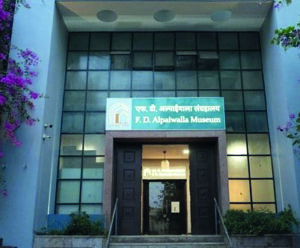 The museum’s origins can be traced back to Framji Dadabhoy Alpaiwalla, a Parsi bullion merchant and avid collector of antiques. So great was his passion for artifacts that his vast collection occupied every corner of his 11-room residence, leaving him to sleep in the kitchen. After his passing in 1951, BPP entrusted scholar-priest and archaeologist, Jamshed Maneck Unvala, who had participated in excavations at Susa, Iran, with the responsibility of curating and establishing the museum. Unvala’s contributions, including proto-Elamite tablets, glazed bricks from the ‘Archer’s Frieze,’ and an excavated Tower of Silence from Yazd, Iran, form an invaluable part of the museum’s collection.
The museum’s origins can be traced back to Framji Dadabhoy Alpaiwalla, a Parsi bullion merchant and avid collector of antiques. So great was his passion for artifacts that his vast collection occupied every corner of his 11-room residence, leaving him to sleep in the kitchen. After his passing in 1951, BPP entrusted scholar-priest and archaeologist, Jamshed Maneck Unvala, who had participated in excavations at Susa, Iran, with the responsibility of curating and establishing the museum. Unvala’s contributions, including proto-Elamite tablets, glazed bricks from the ‘Archer’s Frieze,’ and an excavated Tower of Silence from Yazd, Iran, form an invaluable part of the museum’s collection.
An Immersive Journey Through Parsi-Zoroastrian Heritage
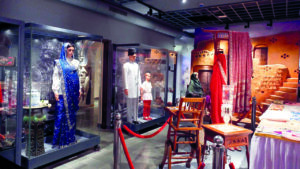 The revamped FD Alpaiwalla Museum offers visitors a deeper, more interactive experience of the Parsi-Zoroastrian community’s historical and cultural contributions. The museum houses two major collections: the Alpaiwalla collection of antiquities and artifacts and rare archaeological finds from Susa, Iran, donated by Jamshed Unvala. One of the newly added highlights is a replica of a Fire Temple, offering an immersive experience with recorded prayer recitations. The façade is modeled after the Maneckji Sett Agiary (Ballard Estate), while the sanctum is inspired by the Anjuman Atash Behram (Princess Street).
The revamped FD Alpaiwalla Museum offers visitors a deeper, more interactive experience of the Parsi-Zoroastrian community’s historical and cultural contributions. The museum houses two major collections: the Alpaiwalla collection of antiquities and artifacts and rare archaeological finds from Susa, Iran, donated by Jamshed Unvala. One of the newly added highlights is a replica of a Fire Temple, offering an immersive experience with recorded prayer recitations. The façade is modeled after the Maneckji Sett Agiary (Ballard Estate), while the sanctum is inspired by the Anjuman Atash Behram (Princess Street).
Among the most remarkable exhibits is an ancient astodan, an earthenware vessel used for storing bones. Visitors can also marvel at pre-Zoroastrian mythological paintings, mother goddess figurines, imperial coins and seals, and rare Persian antiquities. The museum also boasts a reference library containing over 1,900 books on Zoroastrian history and culture.
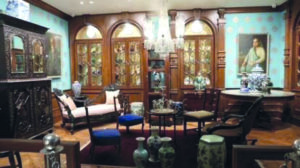 A newly introduced exhibit traces the migration of Zoroastrians from Iran to India, featuring a detailed map titled ‘Parsi Migration Route’. This exhibit highlights two major waves of migration: the first from Khorasan (8th–10th centuries) to Sanjan on India’s western coast, and the second from Yazd and Kerman in the 19th century, leading to settlements in Bombay. Visitors can also admire a nine-foot etched glass replica of the western staircase of Darius’ Palace at Persepolis, originally displayed in London and Delhi before finding a permanent home in the museum.
A newly introduced exhibit traces the migration of Zoroastrians from Iran to India, featuring a detailed map titled ‘Parsi Migration Route’. This exhibit highlights two major waves of migration: the first from Khorasan (8th–10th centuries) to Sanjan on India’s western coast, and the second from Yazd and Kerman in the 19th century, leading to settlements in Bombay. Visitors can also admire a nine-foot etched glass replica of the western staircase of Darius’ Palace at Persepolis, originally displayed in London and Delhi before finding a permanent home in the museum.
A dedicated section on Parsi textiles features a stunning 170-year-old ivory Tanchoi silk saree adorned with peacock motifs from Sir Jamsetjee Jejeebhoy’s family crest, as well as a richly embroidered Gara saree and jhablas (tunics) and caps intricately embroidered with zari.
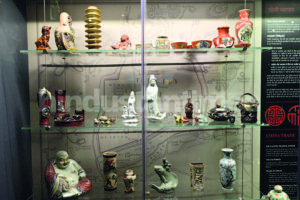 The museum also highlights Parsi merchants’ trade ties with China through its extensive porcelain collection, reflecting how traders used porcelain as ship ballast before selling it in India. A recreation of a Parsi China merchant’s drawing room showcases European-influenced furniture, including an ornate round table featuring Chinese dragon motifs. One of the museum’s most intriguing artifacts is a Chinese figurine dressed as Zoroaster, in a rare depiction.
The museum also highlights Parsi merchants’ trade ties with China through its extensive porcelain collection, reflecting how traders used porcelain as ship ballast before selling it in India. A recreation of a Parsi China merchant’s drawing room showcases European-influenced furniture, including an ornate round table featuring Chinese dragon motifs. One of the museum’s most intriguing artifacts is a Chinese figurine dressed as Zoroaster, in a rare depiction.
As part of the museum’s modernization, outdated display cases and lighting from the 1970s have been replaced with contemporary layouts and enhanced spotlighting. Exhibit labels have been redesigned to be more visually appealing and are now available in Braille, with plans to introduce translations in Marathi and Hindi to ensure accessibility for a broader audience.
The museum’s first floor will soon serve as a space for workshops, lectures, and exhibitions. One of the upcoming events includes a workshop on the legacy of Parsi women, held in collaboration with the British Institute of Persian Studies, the Shapoorji Pallonji Institute of Zoroastrian Studies at SOAS (UK), and the BPP. The museum is also exploring partnerships with Mani Bhavan, aiming to become an integral part of Mumbai’s cultural itinerary.
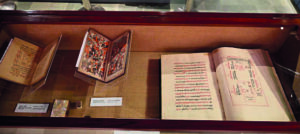 As Mumbai’s only Parsi-Zoroastrian museum and a vital repository of the community’s history, the FD Alpaiwalla Museum continues to serve as a bridge between the past and present. Established in 1954 it is the world’s only museum dedicated to the Parsi-Zoroastrian heritage, housing rare antiquities, manuscripts, artifacts, and textiles that offer a deep insight into the community’s rich cultural and historical legacy. By embracing modern museum practices while preserving centuries-old traditions, the institution offers an enriching experience for scholars, history enthusiasts, and the general public alike. Located at Khareghat Colony (Malabar Hill, Mumbai), it is open on weekdays from 10:00 am to 5:30 pm.
As Mumbai’s only Parsi-Zoroastrian museum and a vital repository of the community’s history, the FD Alpaiwalla Museum continues to serve as a bridge between the past and present. Established in 1954 it is the world’s only museum dedicated to the Parsi-Zoroastrian heritage, housing rare antiquities, manuscripts, artifacts, and textiles that offer a deep insight into the community’s rich cultural and historical legacy. By embracing modern museum practices while preserving centuries-old traditions, the institution offers an enriching experience for scholars, history enthusiasts, and the general public alike. Located at Khareghat Colony (Malabar Hill, Mumbai), it is open on weekdays from 10:00 am to 5:30 pm.
- જેજે હોસ્પિટલના પારસી વોર્ડમાં નવરોઝની ઉજવણી - 5 April2025
- ઝોરોસ્ટ્રિયન વિમેન્સ એસોસિએશન ઓફ સુરત દ્વારા પાણી બચાવો પર્ફોર્મન્સ - 5 April2025
- આવાં યઝદના પરબની ઉજવણી - 5 April2025
